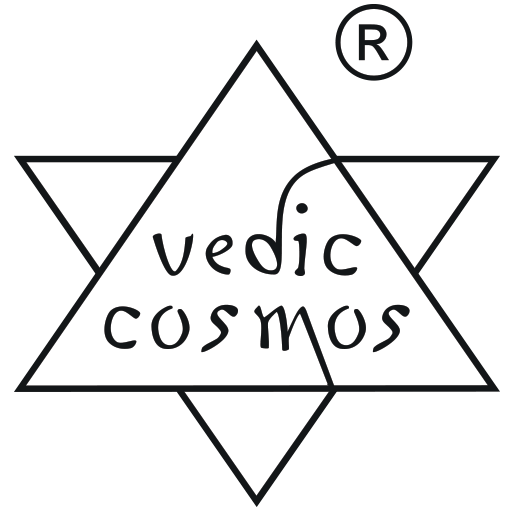
Grhastadharma
Gṛhastadharma is the code of conduct that the householder was expected to live by. The very first sacrament that legitimized this dharma was the sacrament of vivāha or marriage. The term vivāhaḥ arises from the Sanskrit verbal-root ‘vaḥ,’ meaning to bear. Contrary to popular understanding, this root does not imply patriarchal dominance, but rather a sacred vow of companionship, camaraderie and endeavor aimed at a common goal. The Ṛgveda states,
गृभ्णामि ते सौभगत्वाय हस्तं मया पत्या जरदष्टिर्यथासः।
भगो अर्यमा सविता पुरन्धिर्मह्यं त्वादुर्गार्हपत्याय देवाः॥
gṛbhṇāmi te saubhagatvāya hastaṁ mayā patyā jaradaṣṭiryathāsaḥ|
bhago aryamā savitā purandhirmahyaṁ tvādurgārhapatyāya devāḥ||
I take your hand (in mine) for the good fortune that you may reach old age with me as your husband. You have been bestowed upon me by the Gods, Bhaga, Aryamā, Savitā and Purandhi, as the mistress of my household.
– [Ṛgveda, 10.85.36]
Consequently, a wife is called a ‘sahadharmacarī’ or one who is the companion of man, along the path of dharma. A wife is not accepted as a docile complier in the quest for dharma alone. As can be learned from the Vālmīkirāmāyaṇa, a model wife is expected to cajole a straying husband, and at times even admonish him, when he is remiss in his adherence to dharma. Janaka states, as he gives Sītā’s hand in marriage to Rāma, “iyaṁ sītā mama sutā sahadharmacarī tava – This is my daughter Sītā, your fellow-traveler along the path of dharma.” As if in explication of these words, Sītā is often found counseling Rāma, who is glorified in the Bhāratīya tradition as the very embodiment of dharma.
In a nutshell, the role of a wife in the common cause of dharma that is hailed as central to human life, is so profound, man is considered incomplete without her. The Manusmṛti states,
अपत्यं धर्मकार्याणि शुश्रूषा रतिरुत्तमा।
दाराधीनास्तथा स्वर्गः पितॄणामात्मनश्च ह॥
apatyaṁ dharmakāryāṇi śuśrūṣā ratiruttamā|
dārādhīnāstathā svargaḥ pitṝṇāmātmanaśca ha||
Progeny, duty, service, pleasure, other-worldly welfare of both the ancestors and of the self, rest with the wife.
– [Manusmṛti 9.8]
Interestingly, the institution of marriage is pivotal not just to a given family, but to society at large. The householder is commissioned with the responsibility of both the braḥmacārī (student) as well as the sanyāsī (renunciate.) He supports the student by housing him and educating him, and he supports the renunciant by feeding him when he needs to be fed. The institution of marriage was thus the bedrock of a harmonious and sacred society that was dedicated to dharma. The goal of the institution of marriage is proclaimed to be the attainment of the prime goal of human endeavor, namely mokṣa.
The significance attached to the institution of marriage is so central to the Vaidika way of life, avatāras of the Supreme are conceived of as a divine couple (Divya-Dampatī). This conceptualization is both central and unique to Sanātana-dharma. It transforms a disparate creation into a kindred whole (viśva-kuṭuṃbhaḥ,) with the Divine Couple assuming the roles of Jaganmātā (mother of all creation) and Jagatpitā (father of all creation). In essence, the perception of Godhood as a couple provides a model of earthly life and purpose.
The macrocosmic concept of Divya-Dāmpatyaṃ as observed in the līlās of avatāras is perceived in Sanātana-dharma, as a reflection of the microcosmic sacrament of marriage and marital life (gṛhasta-dharma). The groom is perceived as Bhagavān Viṣṇu, and the bride as Śrīlakṣmī. Their marriage is perceived as the union of primeval potency (Prakṛti) with the substrate (Puruṣa), and the birth of offspring, as the march of creation so central to spiritual evolution.
Vaidika tradition therefore, does not condemn Kāma (desire) but deems it one of the four primary goals of human life (puruṣārthas,) reflective as it is, of the icchāśakti of the Paramapuruṣa. In other words, icchāśakti that engenders creation at the macrocosmic level, presents itself as the seedling, kāma, in the microcosm. Consequently, it is believed that when this seedling of kāma is destroyed, the individual soul is no longer subject to the vagaries of creation.
The ultimate goal of vivāha and gṛhasta-dharma as has been stated, is mokṣa, and the līlās of divya-dampatīs such as Rādhā-Kṛṣṇa or Śiva-Pārvatī exemplify the path to this goal. The tradition makes a clear distinction between kāma and prema, loosely translatable to lust and love, however. The former is a product of ahaṅkāra (solipsism), and the latter is experienced as a result of the transcendence of the ahaṅkāra. Ahaṅkāra that lies at the very root of man, is a reflection of the ahaṅkāra-tatva (the great I) which engenders the five subtle elements of creation, from which in turn arise the five causal elements of creation. Ahaṅkāra, by virtue of being a reflection of the ahaṅkāra-tatva of creation, inexorably aligns itself with saṃsāra. Prema on the other hand, is liberating, as it is the very nature of the soul. It is nirdvandva (devoid of an opposite) and niravadhi (endless.) Journey of man from the limited kāma to the divine prema seems to be the crux of the journey called marriage. It is a paradigm of this journey that presents itself for emulation in the divya-dāmpatya-līlās of Gods, either as avatars or temple deities.
In essence vivāha is the saṃskāra that authorizes the journey from ahaṅkāra to Ātma. The tradition as a result glorifies gṛhastāśrama or the order of the householder, as the finest āśrama. The Brahmavaivarta-purāṇam states that Lord Śiva declined to adopt the gṛhastādharma, fearing that the acceptance of a wife would lead to digression for the path of yoga and tapas. In response, Lord Kṛṣṇa states,
गृहीत्वा प्रकृतिं शोभां दिव्यं वर्षसहस्रकम्॥
सुखं महच्च शृङ्गारं करिष्यसि न संशयः।
न केवलं तपस्वी त्वमीश्वरो मत्समो महान्॥
gṛhītvā prakṛtiṁ śobhāṁ divyaṁ varṣasahasrakam||
sukhaṁ mahacca śṛṅgāraṁ kariṣyasi na saṁśayaḥ|
na kevalaṁ tapasvī tvamīśvaro matsamo mahān||
You shall accept the lovely Prakṛti and sport with her, for a thousand celestial years, for you are not an ascetic alone, but Lord as I am.
– [Brahmavaivarta purāṇam, 1.6.34]
This disabuses one of the notions that marital bliss and spiritual evolution are either opposed or divorced from each other. This also clarifies beyond a pale of doubt, that the primary role of an avatar is to be paradigmatic.
गृहस्थधर्म
गृहस्थधर्म वह आचार संहिता है जिसका अनुष्ठान करना एक गृहस्थ से अपेक्षा की जाती है। इस धर्म को वैध निष्पादित करने वाला प्रथम संस्कार शादी, गठ बंधन या विवाह का संस्कार था। विवाहः शब्द की उत्पत्ति संस्कृत के वाचाल-धातु ‘व:’ से है, जिसका अर्थ है सहन करना। लोकप्रिय समझ के विपरीत, यह मूल पितृसत्तात्मक प्रभुत्व का संकेत प्रदान नहीं करता है, अपितु एक समान लक्ष्य हेतु साहचर्य, सौहार्द तथा प्रयास का एक पवित्र व्रत है। ऋग्वेद इस प्रकार व्यक्त करता है,
गृभ्णामि ते सौभगत्वाय हस्तं मया पत्या जरदष्टिर्यथासः।
भगो अर्यमा सविता पुरन्धिर्मह्यं त्वादुर्गार्हपत्याय देवाः॥
मैं सौभाग्य हेतु आपका बांह (स्वीय बांह में) लेता हूं कि आप अपने पति के रूप में मेरे सहित वृद्धावस्था तक पहुंच सकें। आपको देवताओं, भग, अर्यमा, सविता एवं पुरन्धि द्वारा मेरे गृह की स्वामिनी के रूप में मुझ को प्रदत्त किया गया है।
– [ऋग्वेद, १०.८५.३६]
इस परिणामस्वरूप, एक पत्नी ‘सहधर्मचारी’ या वही जो धर्म के मार्ग पर पुरुष का साथी होती है, कहलाती है। एक पत्नी को मात्र धर्मान्वेषण में एक विनम्र अनुरुपक्ता के रूप में स्वीकार नहीं किया जाता है। जिस प्रकार से वाल्मीकीरामायण से समझा जा सकता है, एक आदर्श पत्नी से अपेक्षा की जाती है कि वह विचरित पति को शान्त करे, एवं यदा-कदा उसे भर्त्सना भी प्रयोग करे, यथा वह धर्म के पालन में असावधान रहता हो। जनक कहते हैं, जब वे सीता के हस्त को राम को विवाह में देते हैं, “इयं सीता मम सुता सहधर्मचारी तव- यह मेरी पुत्री सीता है, जो धर्म के मार्ग पर आपकी सहयात्री है। इन शब्दों की स्पष्टीकरण के रूप में, सीता को प्रायः राम को परामर्श प्रदत्त करते हुए प्राप्त करते है, जिन्हें भारतीय परंपरा में धर्म के साकार रूप में महिमामंडित किया जाता है।
संक्षेप में, मानव जीवन के केंद्र के रूप में प्रशंसित धर्म के सामान्य उद्देश्य में पत्नी की भूमिका अति गहन है कि उसके अतिरिक्त मनुष्य अपूर्ण समझा जाता है। मनुस्मृति में कहा गया है,
अपत्यं धर्मकार्याणि शुश्रूषा रतिरुत्तमा।
दाराधीनास्तथा स्वर्गः पितॄणामात्मनश्च ह॥
संतान, कर्तव्य, सेवा, आनंद, उभयतः पूर्वजों एवं स्वयं का अन्य–लौकिक कल्याण, पत्नी के संग स्थिर है।
– [मनुस्मृति ९.८]
रोचक विषय यह है कि विवाह की संस्था मात्र एक निश्चित परिवार हेतु ही नहीं, किन्तु सम्पूर्ण समाज हेतु भी महत्वपूर्ण है। गृहस्थ को उभयतः ब्रह्मचारी (छात्र) एवं संन्यासी (त्यागी) की उत्तरदायित्व निर्दिष्ट की गई है। वह छात्र का समर्थन करता है उसे आवास प्रदान करके एवं उसे शिक्षित करके, एवं वह संयासी का सहायता करता है जब उसे भोजन की आवश्यकता होती है। इस प्रकार विवाह संस्था एक सामंजस्यपूर्ण तथा पवित्र समाज का आधार थी जो धर्म के प्रति समर्पित था। विवाह संस्था का उद्देश्य मानव प्रयास के प्रमुख लक्ष्य मोक्ष की प्राप्ति का सिद्ध करना घोषित किया गया है।
विवाह की संस्था से सम्बन्धित महत्व वैदिक जीवन शैली में इस प्रकार केंद्रीय है कि, परमेश्वर के अवतारों की कल्पना एक दिव्य युगल (दिव्य-दम्पति) के रूप में कल्पित की जाती है। यह अवधारणा सनातन-धर्म हेतु केंद्रीय तथा अद्वितीय भी है। यह एक असमान रचना को एक संपूर्ण (विश्व-कुटुंभ:) में परिवर्तित करती है, जिसमें दिव्य युगल जगन्माता (समस्त सृष्टि की मां) एवं जगतपिता (समस्त सृष्टि के पिता) की भूमिकाओं को धारण करते हैं। सारांश में, एक दम्पति के रूप में ईश्वरत्व की धारणा सांसारिक जीवन तथा उद्देश्य का एक आदर्श प्रदान करती है। अवतारों की लीलाओं में देदृष्टिगोचर कि गई दिव्य-दाम्पत्यं की स्थूल अवधारणा को सनातन-धर्म में विवाह और गृहस्थ जीवन (गृहस्थ-धर्म) के सूक्ष्म ब्रह्मांडीय संस्कार के प्रतिबिंब के रूप में समझा जाता है। वर को भगवान विष्णु के रूप में समझा जाता है, और कन्या को श्रीलक्ष्मी के रूप में। उनके विवाह को आधार (पुरुष) सहित आदिम शक्ति (प्रकृति) की एकता एवं संतान के जन्म के रूप में अवबोध किया जाता है, जो आध्यात्मिक उत्क्रांति हेतु अति महत्वपूर्ण है।
अतः, वैदिक परंपरा काम (इच्छा) की आक्षेप नहीं करती है, अपितु इसे मानव जीवन (पुरुषार्थ) के चार प्राथमिक लक्ष्यों में से एक मानती है, जो कि परमपुरुष की इच्छाशक्ति को प्रतिबिंबित करता है। अन्य शब्दों में, इच्छाशक्ति जो स्थूल जगत स्तर पर सृजन को उत्पन्न करती है, स्वयं को सूक्ष्म जगत में अंकुर, काम के रूप में प्रस्तुत करती है। फलस्वरूप, यह माना जाता है कि जब काम का यह अंकुर नष्ट हो जाता है, तो व्यक्तिगत आत्मा सृष्टि की अनिश्चितताओं के अधीन नहीं रह जाती है। जिस प्रकार से व्याख्यायित किया गया है, विवाह तथा गृहस्थ-धर्म का परम उद्देश्य मोक्ष है, एवं राधा-कृष्ण या शिव-पार्वती जैसी दिव्य-दम्पति की लीलाएँ इस लक्ष्य के पथ का उदाहरण प्रस्तुत करती हैं। तथापि, परंपरा काम तथा प्रेम के मध्य स्पष्ट अंतर करती है, जिन्हें प्रायः वासना तथा प्रेम में अनुवाद किया जा सकता है। प्रथम अहंकार (स्वप्रशासन) का एक उत्पाद है, तथा द्वितीय अहंकार के उत्कृष्टता के परिणामस्वरूप अनुभव किया जाता है। अहंकार जो मनुष्य के मूल में स्थित है, अहंकार-तत्व (महान मैं) का प्रतिबिंब है जो सृष्टि के पांच सूक्ष्म तत्वों को उत्पन्न करता है, जिससे पुनः सृष्टि के पांच कारण तत्व उत्पन्न होते हैं। अहंकार, सृजन के अहंकार-तत्व का प्रतिबिंब होने के कारण, अनिवार्य रूप से स्वयं को संसार के साथ समरूप हो जाता है। इसके विपरीत में, प्रेम मुक्ति प्रदायक है, कारण कि यह आत्मा का स्वभाव है। यह निर्द्वंद्व (विपरीत से विहीन) एवं निरवधि (अंतहीन) है। मनुष्य की सीमित काम से दिव्य प्रेम की ओर पार करना विवाह नामक यात्रा का सार प्रतीत होती है। यह इस यात्रा का एक प्रतिमान है जो स्वयं को देवताओं की दिव्य-दाम्पत्य-लीलाओं में अनुकरण हेतु प्रस्तुत करता है, या तो अवतारों के रूप में अथवा मंदिर के देवताओं के रूप में। सार रूप से विवाह वह संस्कार है जो अहंकार से आत्मा तक की यात्रा को अधिकृत करता है। इस परंपरा के परिणामस्वरूप, गृहस्थाश्रम या गृहस्थ के क्रम को सर्वश्रेष्ठ आश्रम के रूप में महिमामंडित करती है। ब्रह्मवैवर्त-पुराणम के अनुसार, भगवान शिव ने गृहस्थधर्म स्वीकृत करने से प्रत्याख्यान कर दिया, क्योंकि उन्हें भय था कि पत्नी को स्वीकार करना योग एवं तप के मार्ग में भटकने का कारण में परिवर्तित हो सकता है। प्रत्युत भगवन कृष्ण कहते है ,
गृहीत्वा प्रकृतिं शोभां दिव्यं वर्षसहस्रकम्॥
सुखं महच्च शृङ्गारं करिष्यसि न संशयः।
न केवलं तपस्वी त्वमीश्वरो मत्समो महान्॥
तुम प्रियंकर प्रकृति को स्वीकार करो एवं एक सहस्त्र दिव्य वर्षों तक उसके संग क्रीड़ा करो, कारण कि तुम मात्र तपस्वी नहीं हो, परन्तु मेरी सदृश भगवान हो।
– [ब्रह्मवैवर्त-पुराणम्, १.६.३४]
यह उन धारणाओं में से एक का भ्रम निवारण करता है कि वैवाहिक आनंद एवं आध्यात्मिक क्रम-विकास या तो परस्पर विपरीत हैं अथवा एक-दूसरे से पृतक हैं। यह संशय विहीन यह भी स्पष्ट करता है कि अवतार की प्राथमिक भूमिका प्रतिमानात्मक होना है।








